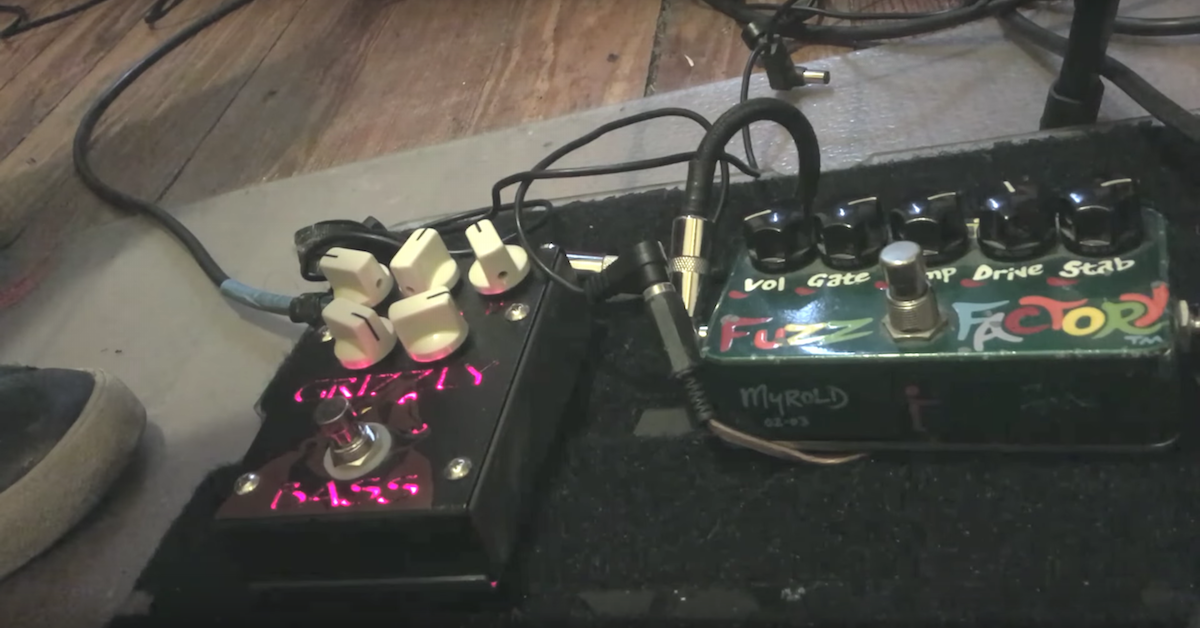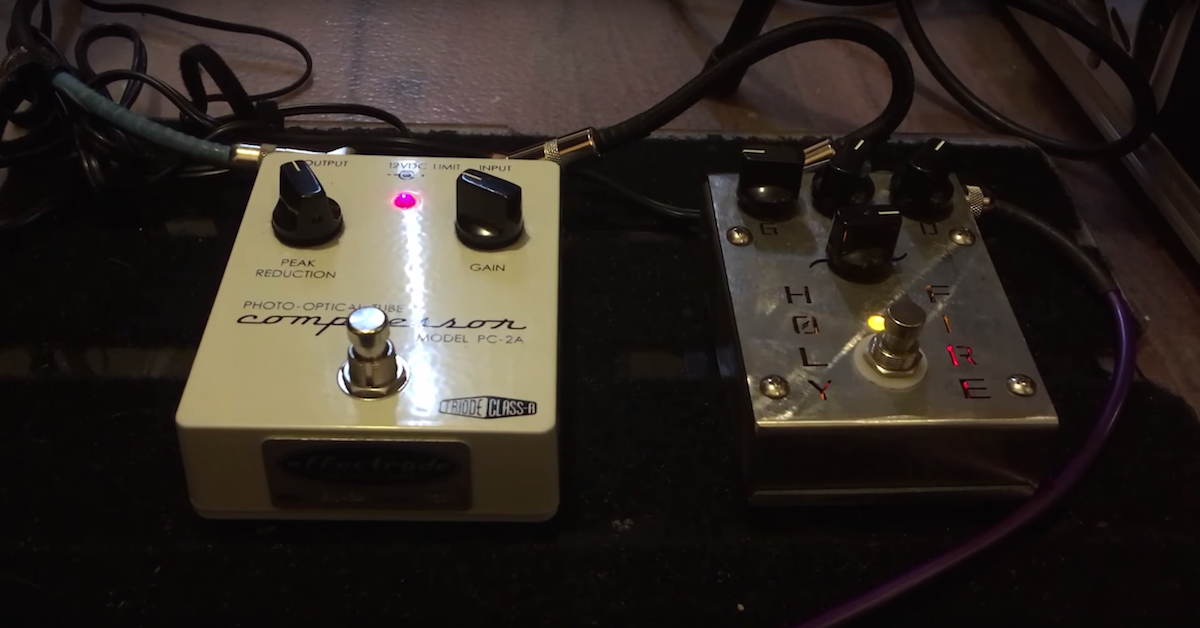Gain Effects 101: Overdrive, Fuzz, Distortion & More
Article Content
There are several ways you can distort or overdrive your guitar. Although they all clip your signal, how they do it varies, as does the tone they create. Here’s an overview of the various types of guitar gain staging and clipping, including some audio examples at the bottom.
Overdrive
The most common clipping method for guitarists is overdrive. Overdrive is what we call soft clipping. It doesn’t chop off the top of the waveform as aggressively as other forms of clipping and results in a warmer tone that isn’t as harsh as a fuzz.
The idea behind soft clipping and overdrive pedals is to recreate the sound of a tube amplifier breaking up. As a tube amp gets louder, it starts to lightly distort or “overdrive”. This type of gain is a favorite among many guitarists. It slightly compresses your signal and warms up your tone. In fact, a lot of guitarists often use a little overdrive via their amp or pedal, even when they’re using a fuzz. More on this “stacking” idea later.
Some of the more famous overdrive pedals are the Ibanez Tube Screamer and Boss OD-1. A few newer pedal makers seek to reproduce these tones. For example, JHS has put the whole series of Tube Screamers into one pedal, the Bonsai.
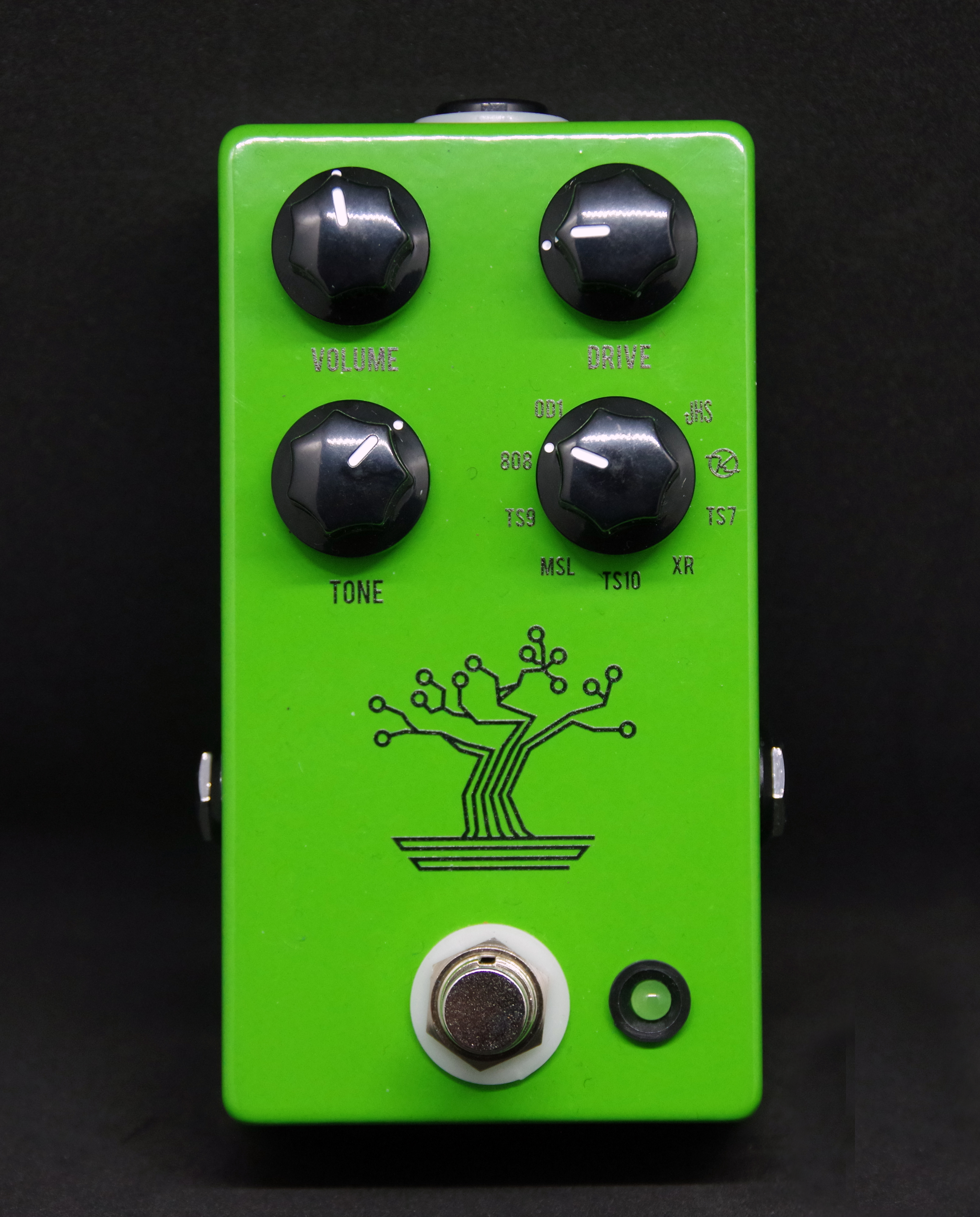
JHS Bonsai
The Tube Screamer tone is a particular type of overdrive. It has a little bass roll-off and midrange boost. Two moves that will make your guitar tone cut more. Other pedal makers aim for tonal variations. For example, Keeley’s D&M Drive offers a differently voiced overdrive. Effectrode’s Tube Drive is a tube-based overdrive that’s as close to a real amp overdrive as you’ll hear. Effectrode uses high voltage and three real tubes to recreate the process of saturating tubes. Unlike Tube Screamer-style pedals, the Tube Drive doesn’t cut low end or overly boost the mids.
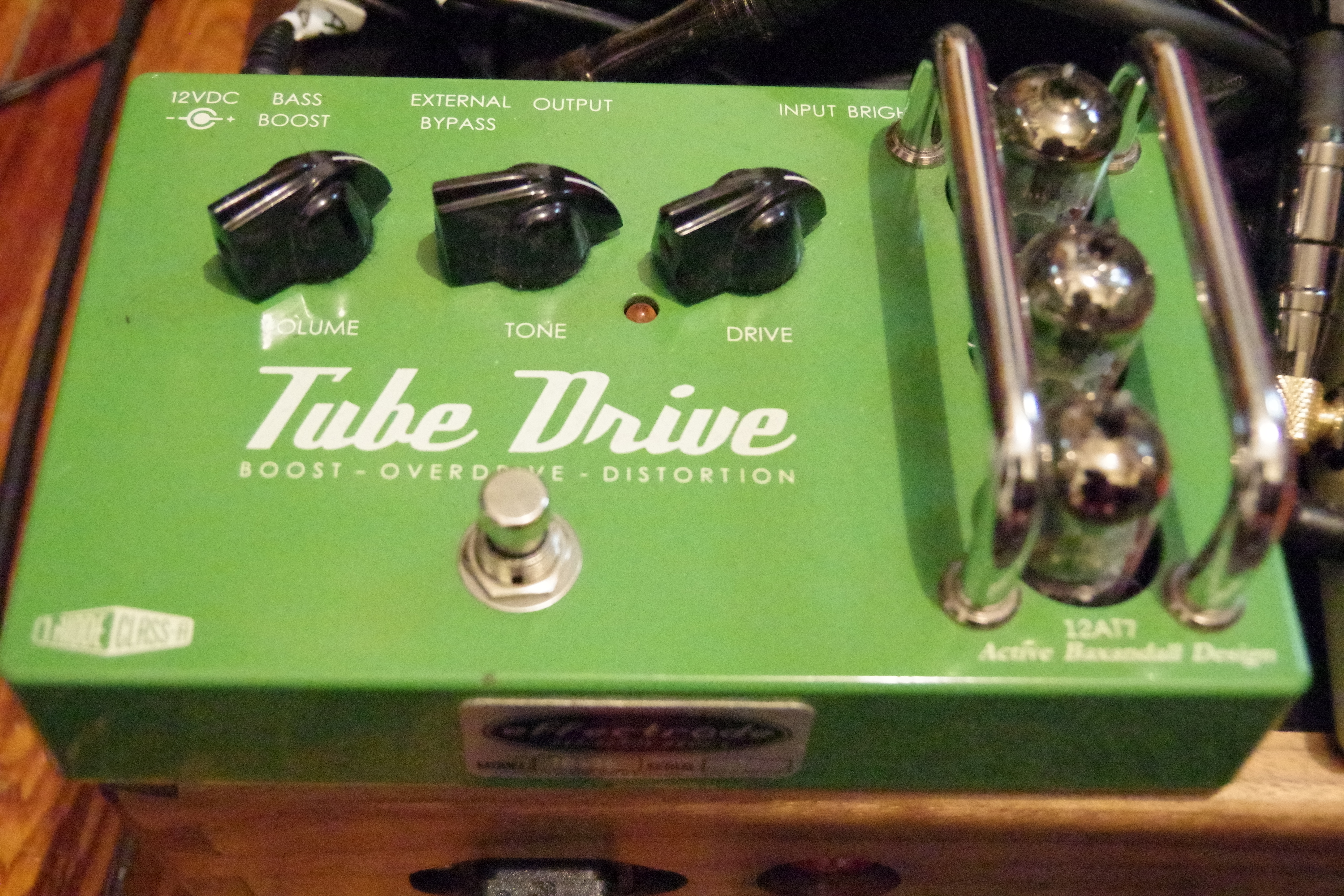
Effectrode Tube Drive
That’s a lot of options — and I just named a few! Choosing the right overdrive is very much about knowing which flavor you’re looking for. I often have more than one drive on my session and touring board. One size definitely does not fit all.
Klon
A lot of people mistake the Klon Centaur for an overdrive pedal, but it’s not. The Klon employs hard clipping. It was designed to be more of a boost than an overdrive. It’s supposed to be paired with an amp that is already driving and will merely push the amp over the top. The Klon tends not to sound the best into a perfectly clean amp. I would place it in the catalyst category with a treble booster (more on this later). A pedal that pairs with an amp that is cooking. A sum-of-two-parts tone. That’s why the Klon is often misunderstood. The Klon’s circuit cuts the low end and boosts the mids, which to some players sounds like a Tube Screamer. But the mids that the Klon boosts are at a higher frequency than the Tube Screamer. The two pedals don’t really sound the same to me.
Tip: You can also place the Klon before an overdrive pedal on a light setting to emulate this interaction. Two of my favorite Klons are the Klon KTR and the J. Rockett Archer.
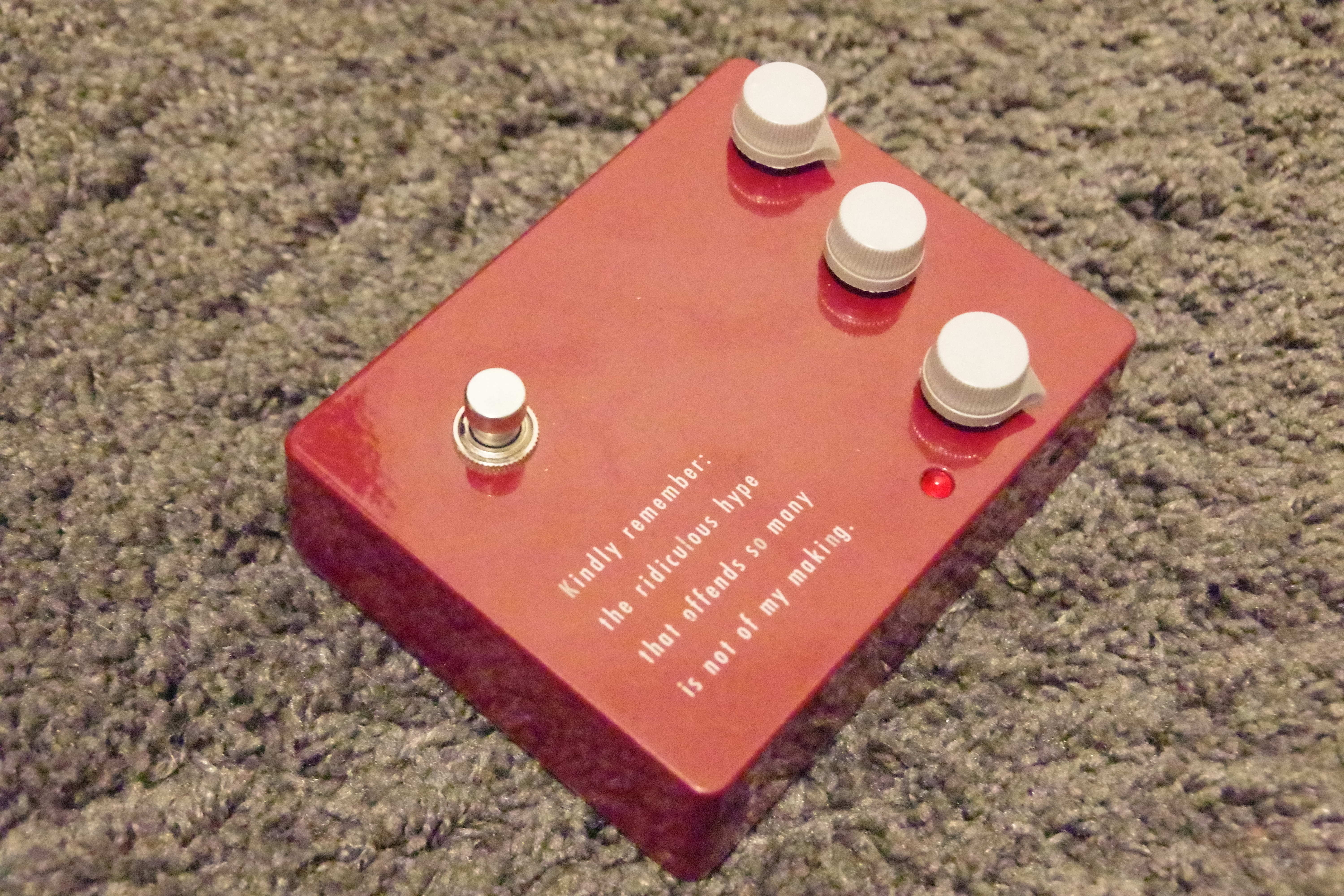
Klon KTR
Fuzz
Fuzz is a hard clipping tone. There is nothing subtle about the way fuzz chops off the peaks of your signal. It’s about as refined as a trying to filet a fish with a butter knife. There is a lot of charm in fuzz, though. Its ruggedness, and sometimes randomness, can add excitement to your sound.
Fuzz was the first form of clipping designed for guitarists. The maiden voyage was the Maestro FZ-1 which is the Rolling Stones “Satisfaction” tone. Then came the Tone Bender, Fuzz Face, and, eventually, Big Muff styles of fuzz. The sounds of each vary considerably, to my ears.
When choosing a fuzz you have to consider whether you’re into silicon or germanium transistors. The early fuzz circuits were germanium. In the late ‘60s, silicon showed up. Germanium is the wild older brother staying out late and doing beer bongs on a school night. It tends to be a bit unstable in hot environments, but it’s a real life-of-the-party fuzz otherwise. Silicon is the younger brother who is on the honor roll and the track team. Silicon works excellent in all temperatures but is a bit more compressed (tightly wound) and bright. I tend to favor germanium for old-school fuzz. But the Big Muff is a silicon-based fuzz, and I do love a Big Muff.
Some of my favorite fuzz pedals are:
The Analog Man Sun Face germanium. This is a brilliant recreation of the Dallas Arbiter Fuzz Face. Dallas Arbiter also made silicon-based Fuzz Faces. I think of it like this: Hendrix = germanium; Gilmore = silicon.
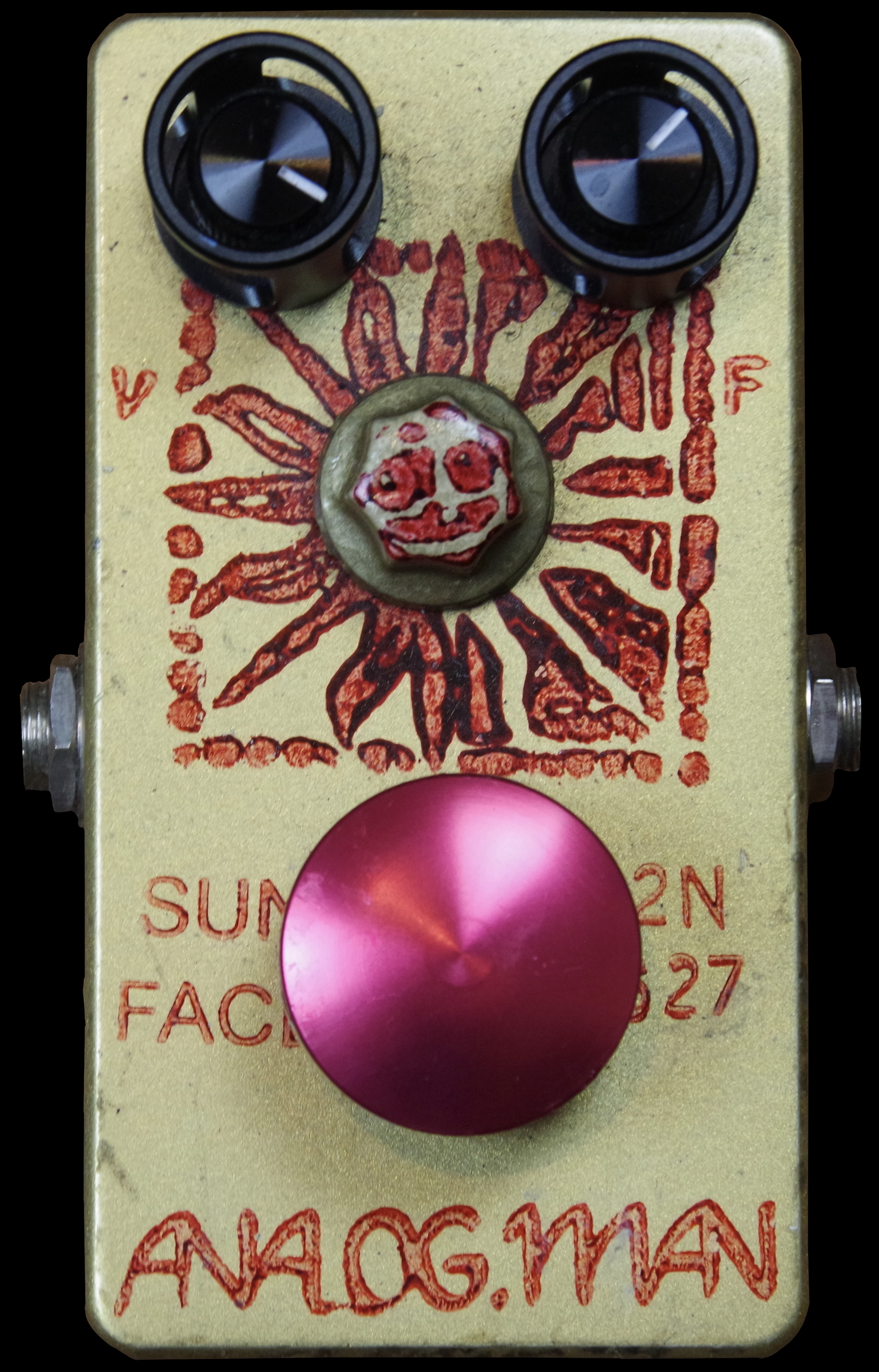
Analog Man Sun Face
I love the Tone Bender MKI circuit. It’s a tricky pedal to make. It has only a few parts inside, but they require some real attention. Because of this, only about 1,000 were made originally. Finding a great remake is hard. I really like LIC Pedals’ Tone Bender MKI reproduction. Chris really knows how to tune them, and it perfectly captures the Mick Ronson tone from his work with David Bowie.
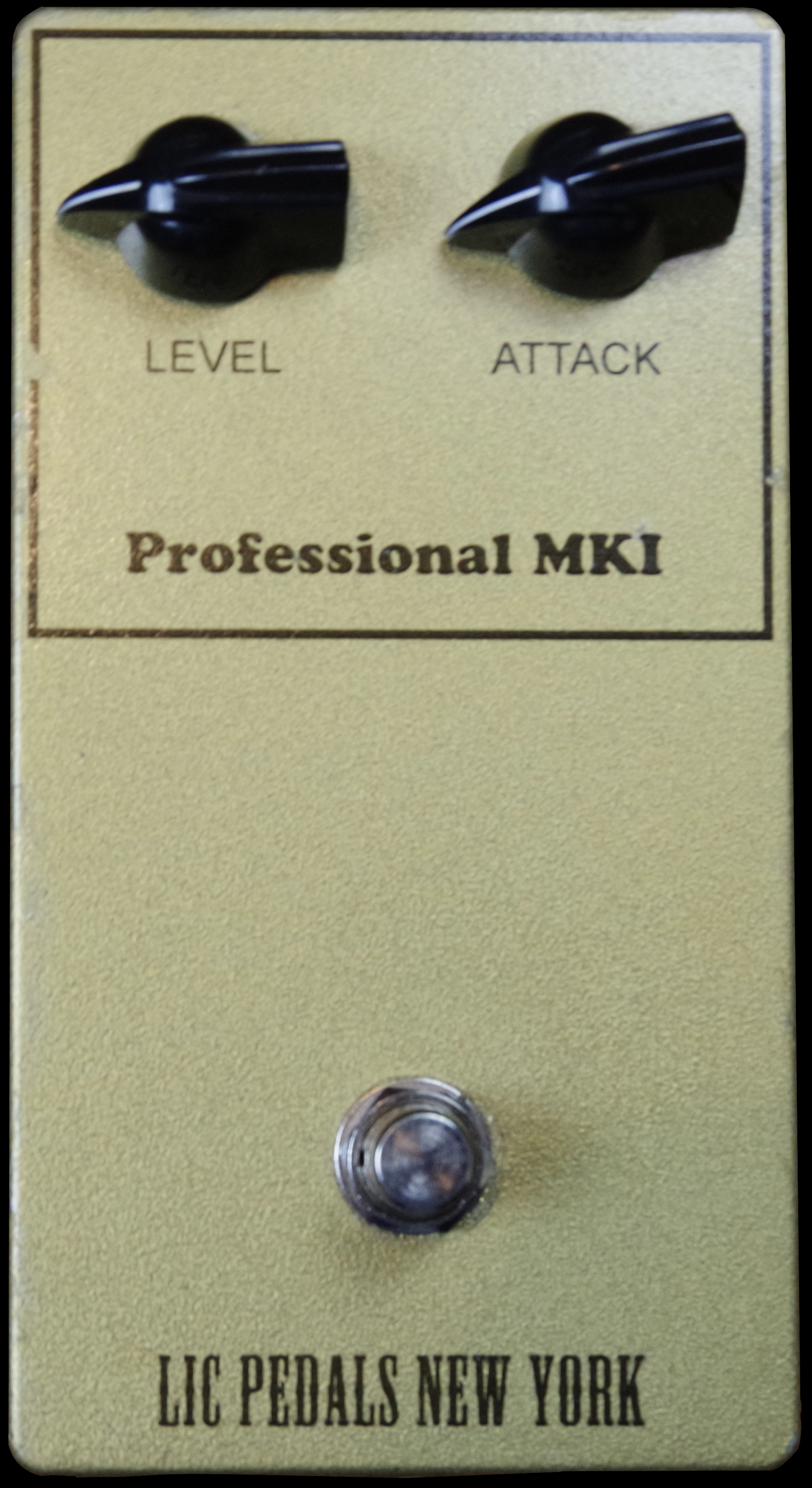
LIC MKI
Several Big Muff pedals are being made now. JHS’s Muffuletta puts many eras of fuzz in one pedal. There is also Wren and Cuff, which makes specific reproductions of different periods of the Muff. Because of manufacturing inconsistencies, Big Muff pedals varied quite a bit during production — not just between models but often between two pedals from the same year. So two companies that make a Muff copy of the same era could sound different. They may be using a different Muff as a reference point.
The Hudson Electronics Broadcast is based on the preamp from an old British Broadcast console. In general, it’s more often used as a boost or preamp. But you do have the option of clipping its germanium brains out. It’s the Beatles “Revolution” sound, which I have found no other pedal to capture that sound.
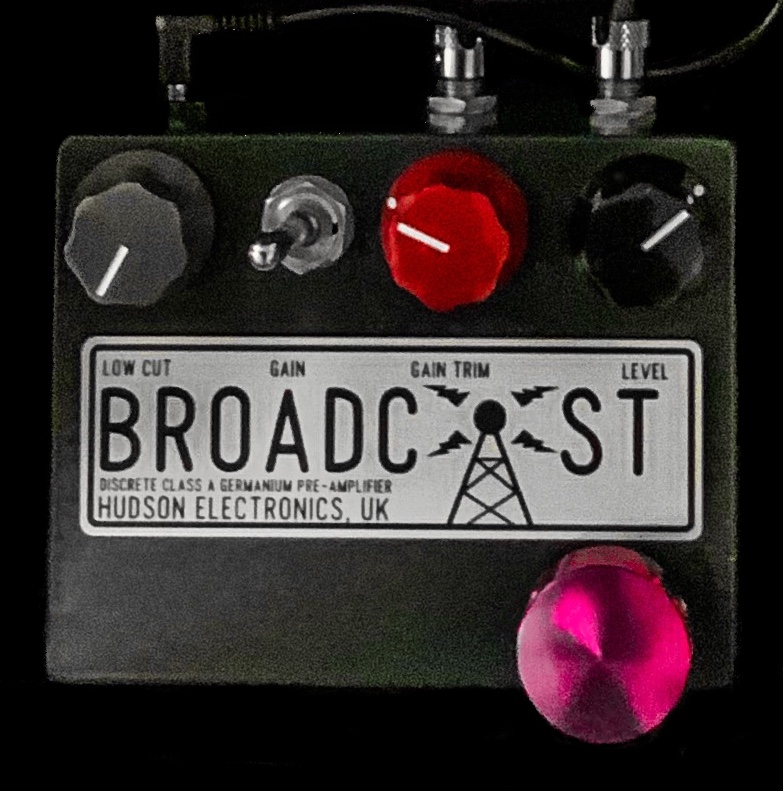
Hudson Electronics Broadcast with Barefoot Button
Distortion
Distortion is yet another form of hard clipping, but it sounds completely different from fuzz. When the signal arrives at the clipping stage, a distortion pedal removes low end, only to add it back after the clipping stage.
This results in a more focused tone. Where fuzz can sound flabby, distortion is tighter.
A classic distortion pedal is the Proco Rat which came out in 1978. There are many modern versions of distortion pedals, and I would dare say that they’re more popular now than fuzz. But sometimes you want fish tacos and sometimes you want fish curry.
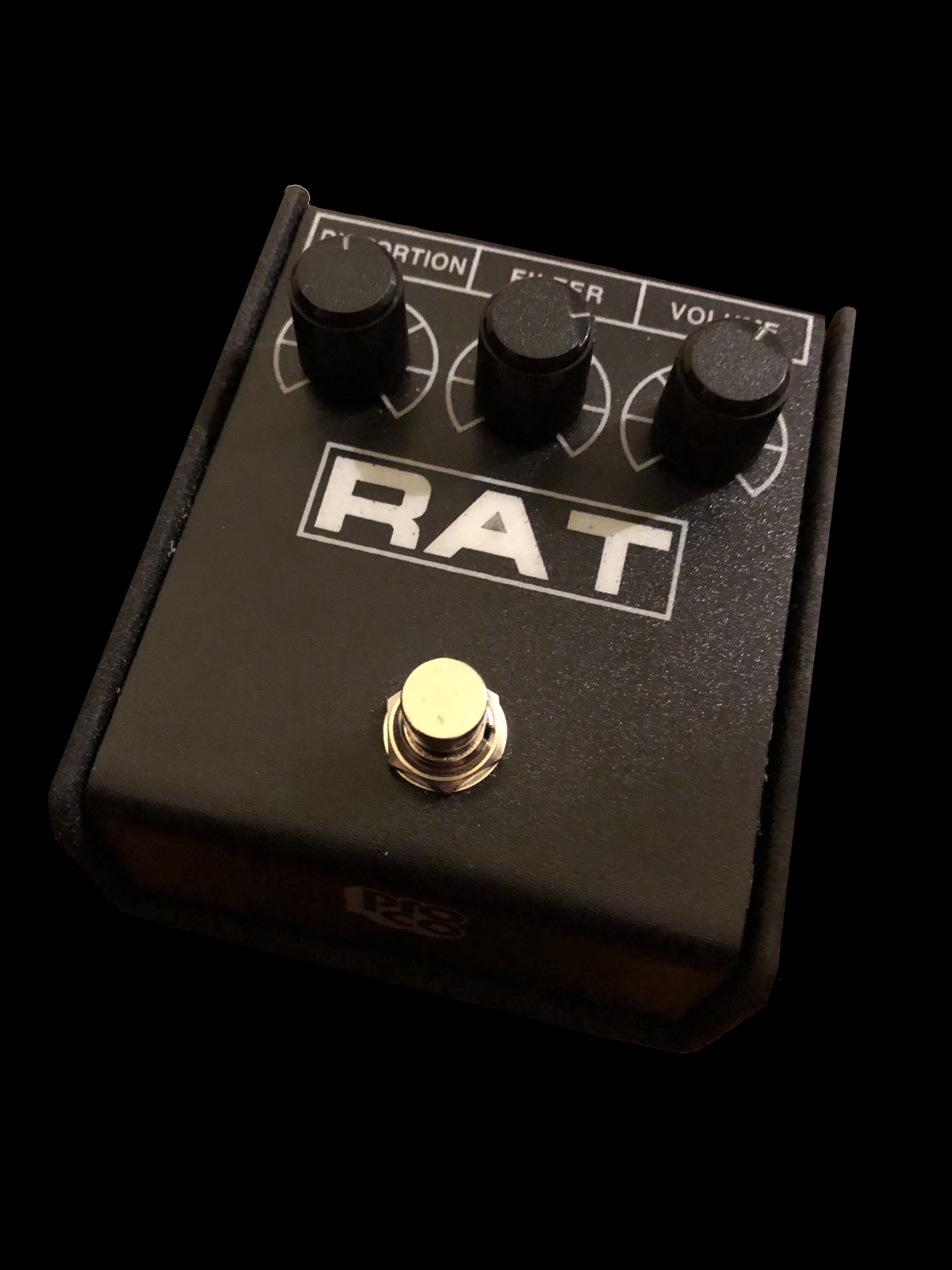
Proco Rat
There are varying levels of pedal distortion.
As an example, the Empress Effects Heavy has much more gain and EQ options for dialing in more metal tones.
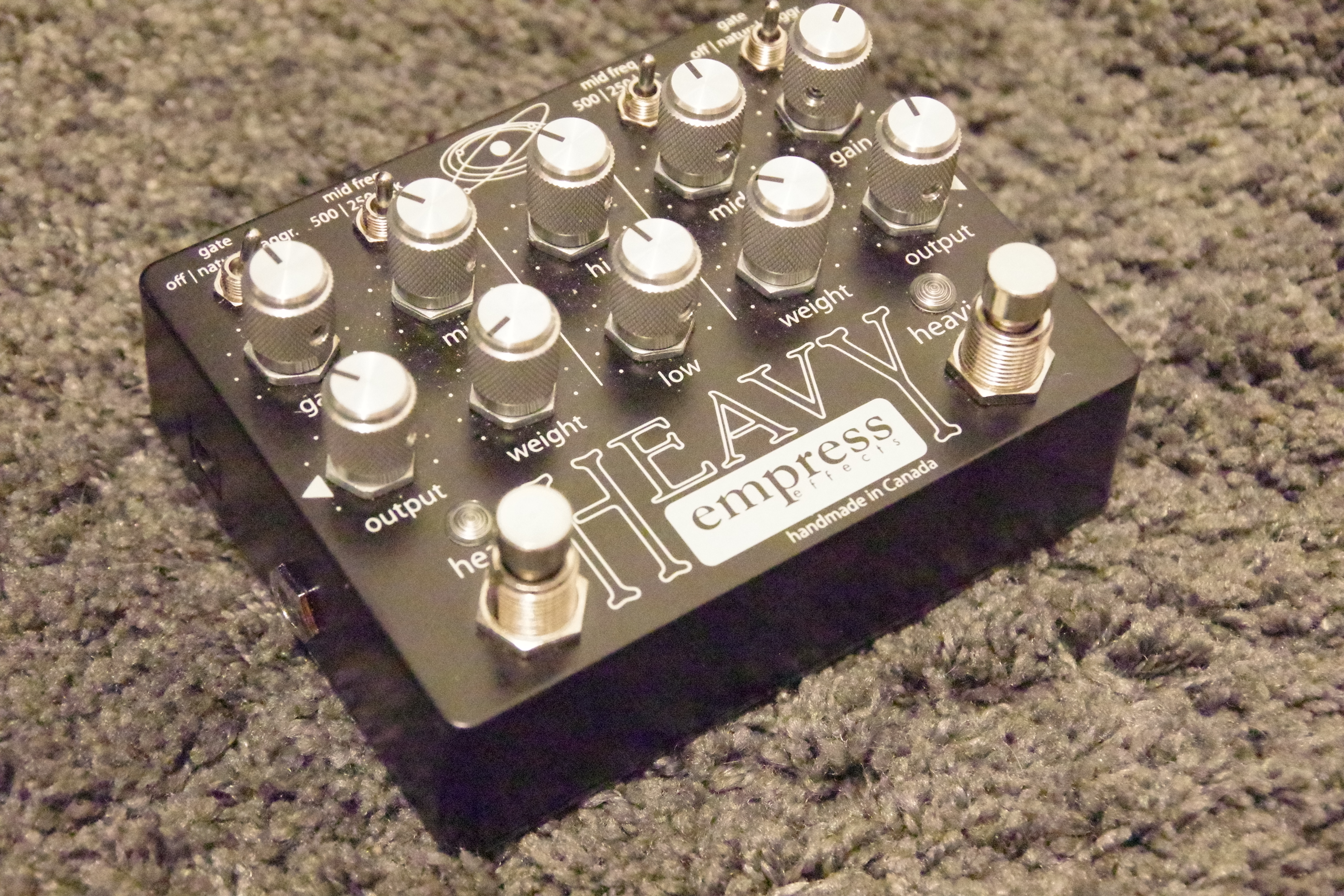
Empress Heavy
Amp Distortion
Some amps have extra preamp tubes to clip the signal harder. These amps have master volumes which allow you to get a more modern rock guitar sound.
But be aware that using preamp stages on amps to get distortion or overdrive won’t sound the same as cranking a tube amp to get power tube saturation.
Preamp stage distortion tends to be a little more fizzy, whereas power amp distortion sounds fatter and more wide open.
Treble Booster
The treble booster was designed to brighten up the dark amps that were being produced in England in the mid-’60s. Even though we associate Vox and Marshall with bright tones, early models were darker than what we’re used to today.
The Dallas Arbiter Rangemaster is a simple germanium-based hard clipping boost circuit. But this isn’t exactly a regular boost. Nor is it a Klon.
Even though it’s labeled as a treble booster, it’s really a high midrange boost. By boosting the upper mids, cutting a lot of lows, and adding a whole lot of gain, it can really make your guitar cut through and make your amp scream.
As you turn the treble booster up (it’s a one-knob device), your signal gets crunchier. It doesn’t sound like any other pedal. It’s kind of like a fuzz with more dynamics, less low end, and less saturation.
The original was a box that was meant to be placed on top of your amp and left on all night. Today a few versions are being made in pedal form. My favorite is the Analog Man Beano Boost.
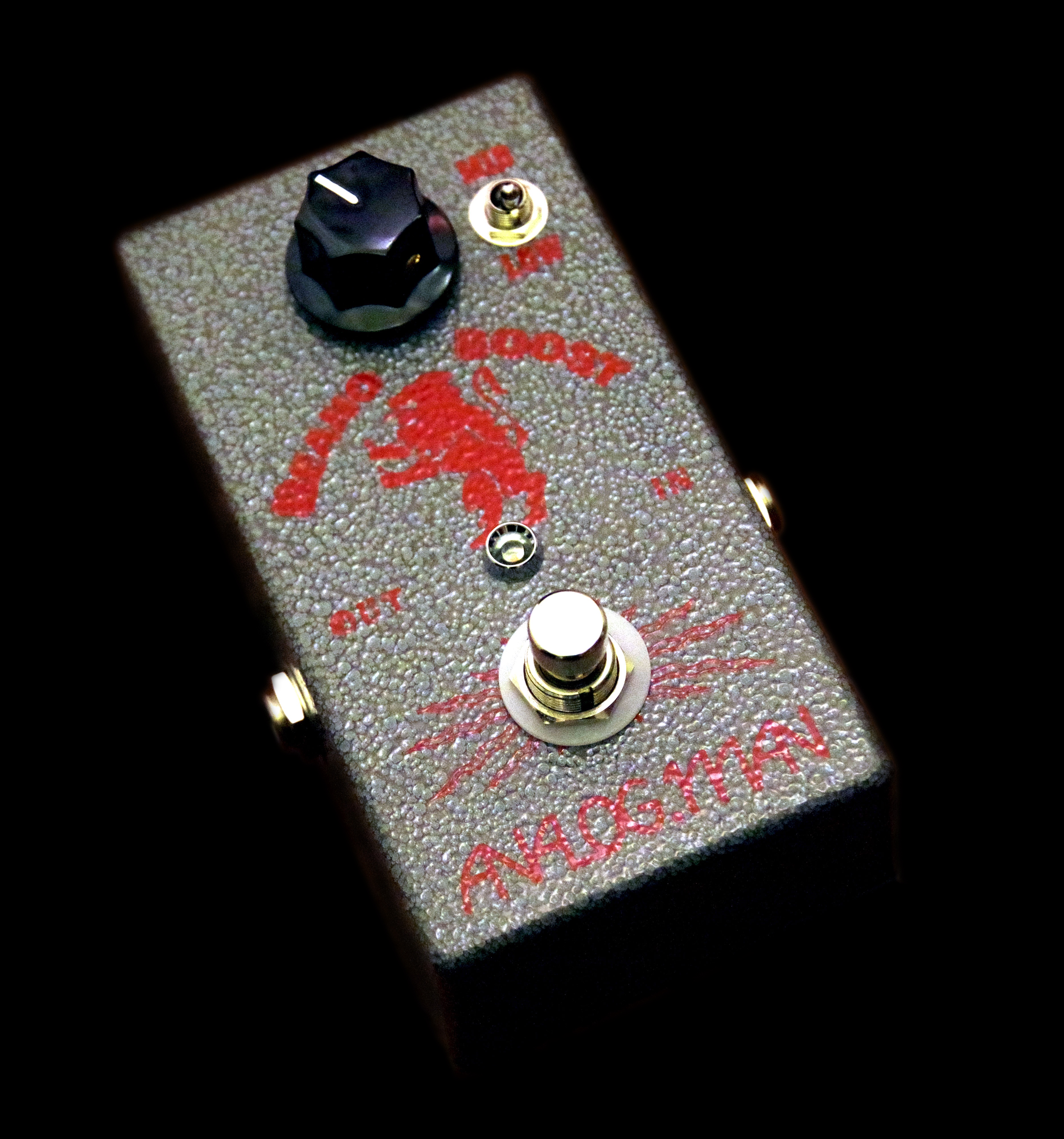
Analog Man Beano Boost
With the amount of gain it adds, it’s tough to turn it off. It’s a one-knob device. Just volume and a lot of it! Up to 18 dB of boost. Hide your pets, warn your neighbors!
To deal with the volume issues (the massive increase in output), I will often place an overdrive after the Beano Boost to tame the volume. This allows me to get that treble booster tone at the same volume as my bypassed tone.
My first choice for this is the Effectrode Tube Drive because it has real tubes. I can hit the pedal with all 18 dB of boost if I want, then turn down the Tube Drive’s output volume.
Different overdrive pedals can work for this as well. You have to experiment.
Bit Crusher
A bit crusher is a form of clipping that is accomplished by adjusting the bandwidth of a digital signal. That sounds a little heady … let’s simplify.
Your guitar signal gets converted to a digital signal. From here, you can adjust the sample rate. As you reduce the sample rate, the character of the distortion changes. A higher-quality signal requires a higher sample rate. As you lower the sample rate, you get more of a low-fi tone.
It’s almost like a digital sonic time machine. You can easily create the low-fi digital clipping of 1980’s digital devices.
A bit crusher could also be called a downsampler.
This is a radically different sound than what we’re used to with overdrive, distortion and fuzz. You can get a very industrial tone with it. It’s not for the faint of heart. You can also start to emulate the sounds of vintage video games from the ’80s and early ’90s.
I use the Dr. Scientist BitQuest which has a fantastic bit crusher on it. I’m going to use this pedal as an example of the parameters a bit crusher has.
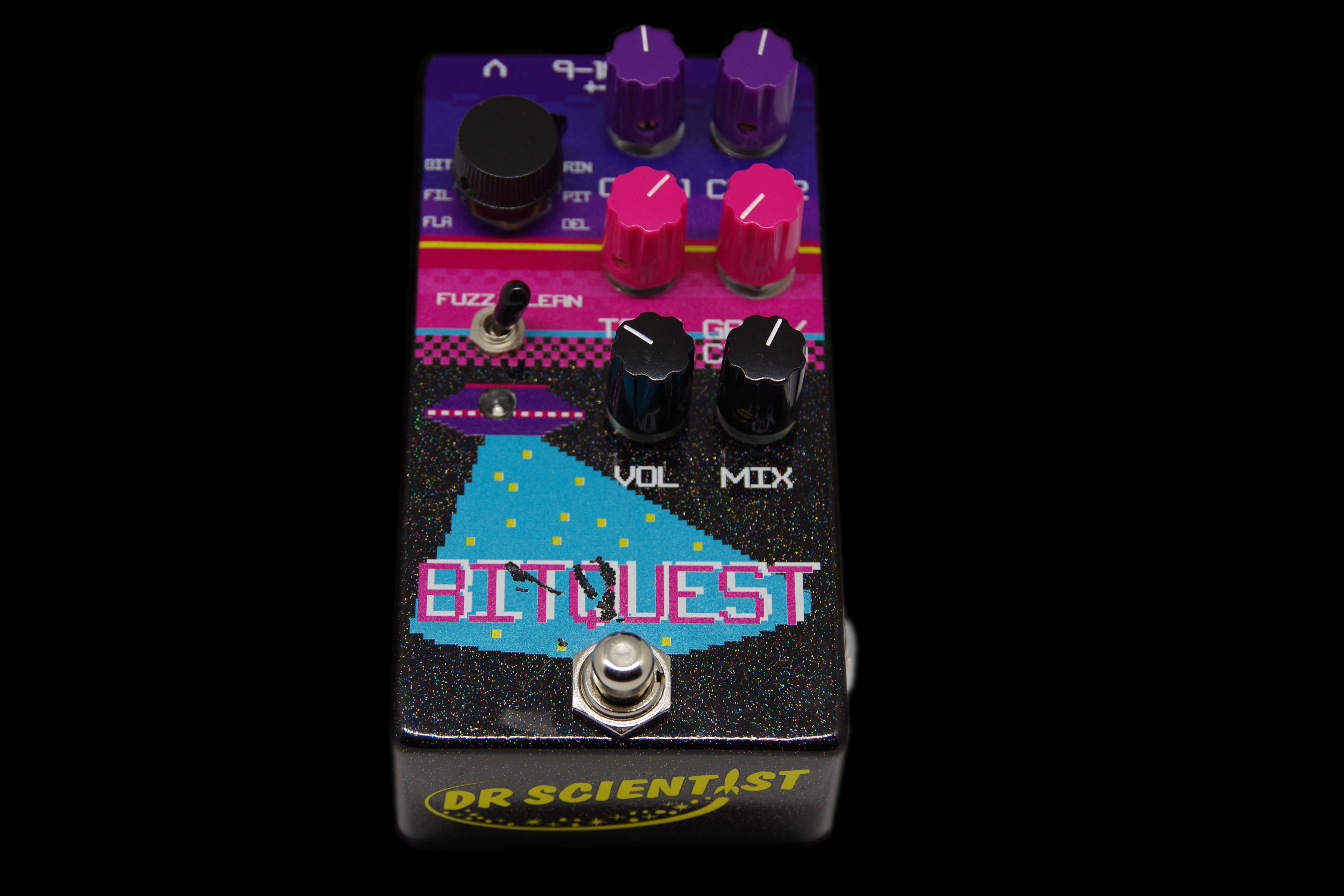
Dr. Scientist Bitquest
To quote the BitQuest manual:
“A bit crusher removes digital samples from your signal, distorting the signal by lack of information.
“A sample rate reducer limits the maximum high-frequency resolution while introducing weird aliased frequencies.”
Let’s listen to some examples from each method of gain. They were recorded using a Gibson Les Paul with Florance Pickups and a Headstrong Lil King Reverb amp. I used a Soyuz Bomblet condenser mic (one of my favorite guitar amp mics) into a UAD Apollo using the Neve 1073 preamp in the Unison Slot.
Example 1: Driving Rock Riff
Overdrive: Keeley D&M Drive
Overdrive: JHS Bonsai
Distortion: Proco Rat
Overdrive: Cash Cow
Fuzz: LIC MKI
Bit Crusher: Dr. Scientist BitQuest
Treble Booster: Analog Man Beano Boost
Example 2: Classic Rock Groove
Treble Booster: Analog Man Beano Boost
Fuzz: LIC MKI
Distortion: Proco Rat
Overdrive: Danelectro Cash Cow
Overdrive: Keeley D&M Drive
Bit Crusher: Dr. Scientist BitQuest
Bit Crusher: Dr. Scientist Bit Quest w/tweaking knobs
Although I didn’t use a Klon-style pedal in the above examples, I want to include a few examples of what a Klon sounds like.
Example 3: Classic Rock Arpeggiated Riff
Klon: Les Paul into a J. Rockett Archer Ikon boosting a Vox AC15
Example 4: Rock Lead
Klon: Les Paul into a J. Rockett Archer Ikon boosting a Vox AC15 solo
This should give you a taste for what each type of gain sounds like. Now it’s time for you to explore the many variations and find what fits your taste.




